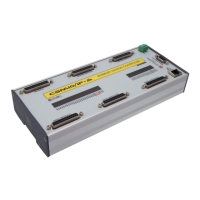11. PID controller (regulator)
11.1 What is PID controller
As opposed to stepper motors which are,
we can say, controlled "blindly", servo
drives work in so called closed loop, so
when they control a motor they check if its
position is compliant with the set position.
If actual rotor position differs from the
expected one, there is a current correction
entered to overcome the existing error. If
the motor overtook the position that was
set, it just slows down or speeds up to
catch up if the set position overtook the actual position. It is just like driving a car we would like to catch
up another car next to us. If it is running away we step on the gas and speed up and if we are too far we let
up on the gas to slow down. What happens if the car we want to align with doesn't make it any easier and
every moment speeds up or slows down, moreover we are already nervous and we overreact stepping on
the gas or brake to the limit time and time again? As a result, we will still pass the chased car, being most
of the time far away from it. As a result, we will still pass the chased car, being most of the time far away
from it. Translating this analogy to a CNC machine, it would appear that axes do not follow the set motion
path and a lot of machining inaccuracies would arise.
Servo drives require fast and precise correction to the position error. Going back to the cars comparison,
the point is that the driver from the chasing car should be as experienced as possible, so he could predict
behavior of the second running away car and to react precisely as the situation evolves. In servo drives
PID controller is the driver. The controller is a mathematical algorithm that is responsible for motor reac-
tion on deviations from set position. The PID name derives from the following terms of the controller.
•
Proportional
•
Integral
•
Derivative
CS- Lab s.c. – CSMIO/IP- A - CNC controller
Page 77

